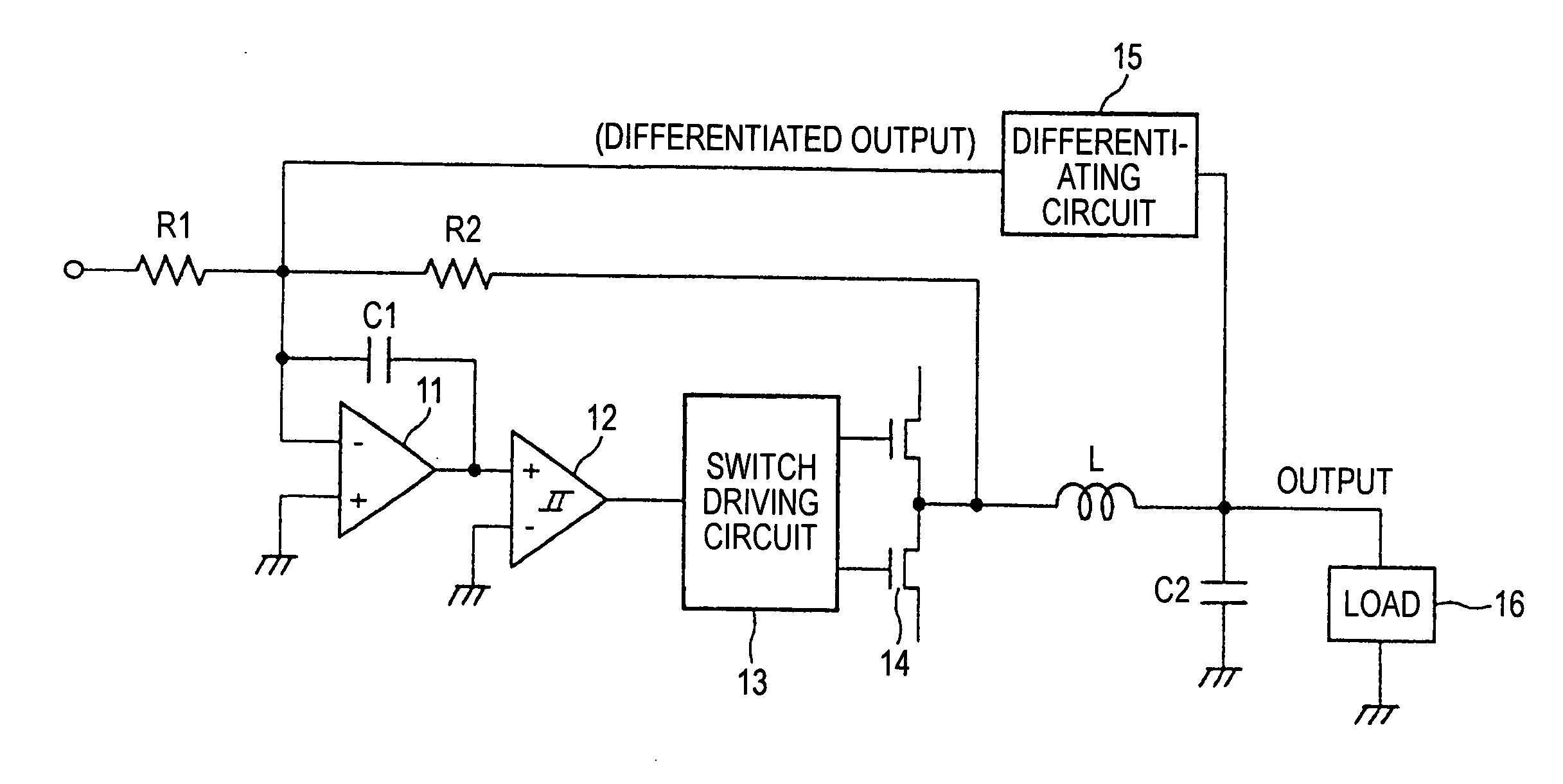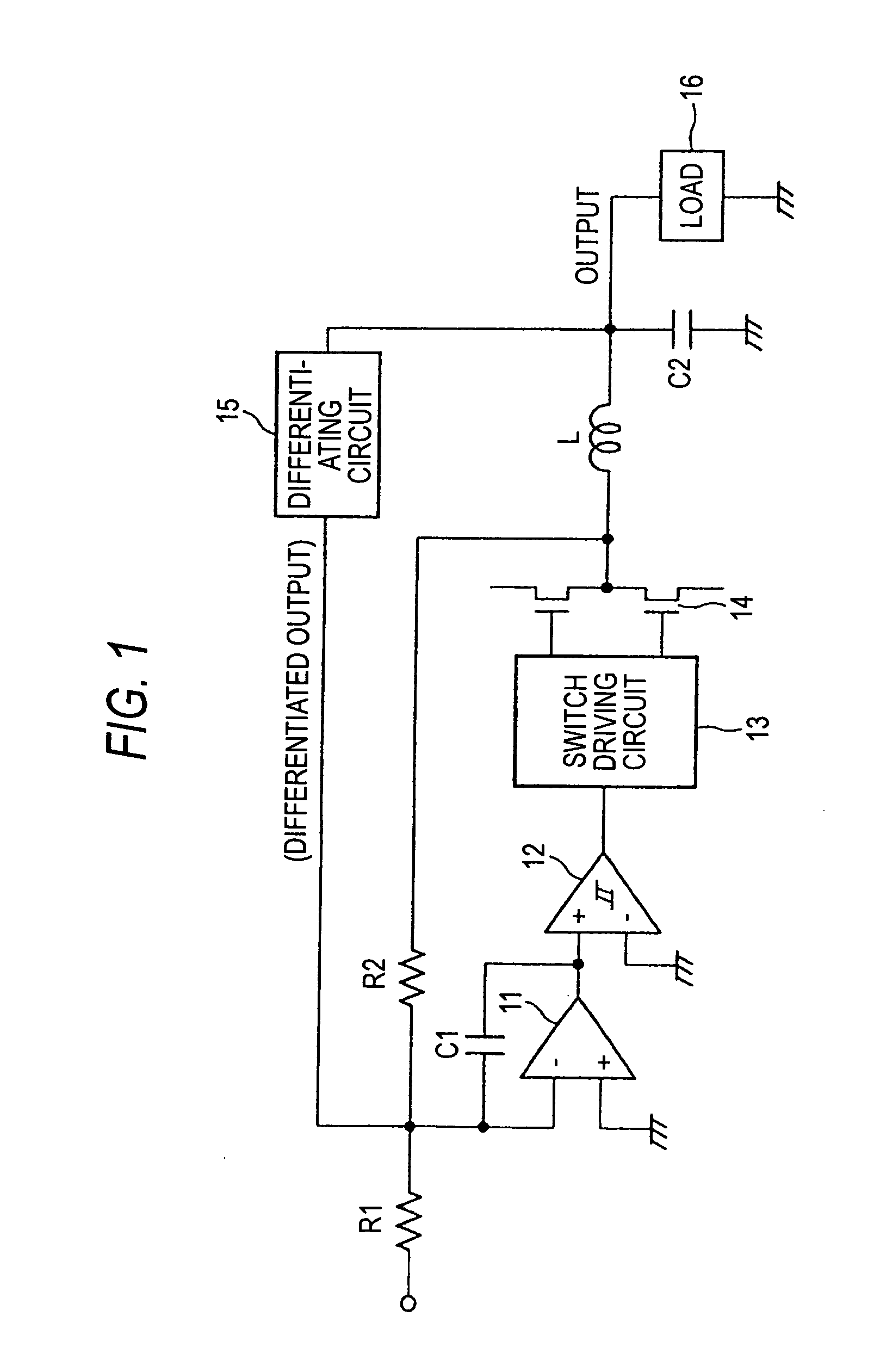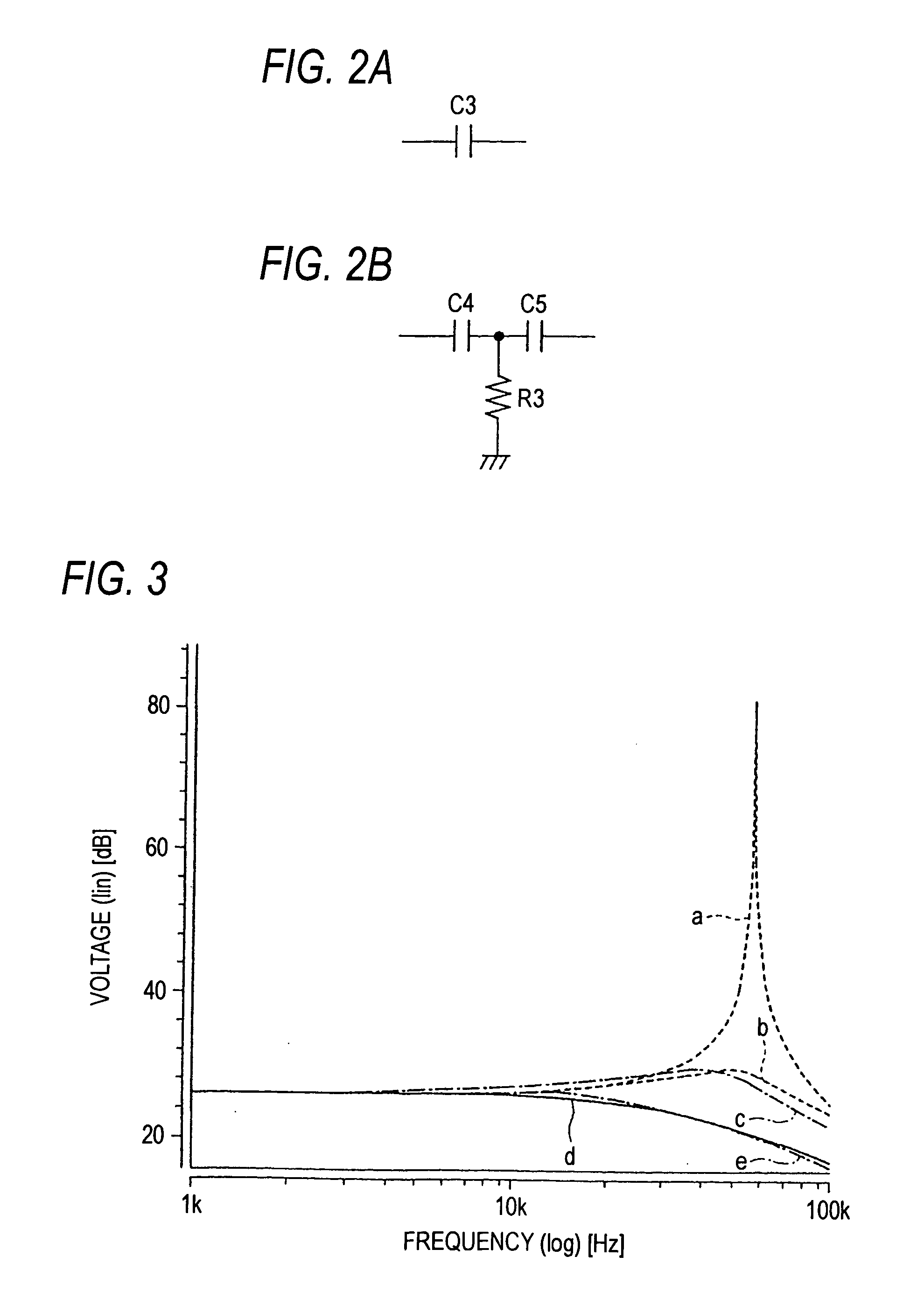Class-D amplifier
a class-d amplifier and amplifier technology, applied in the direction of amplifiers, dc amplifiers with modulator-demodulator, amplifiers, etc., can solve the problems of coil and capacitor electrical destruction, impede the improvement of the efficiency of this class-d amplifier,
- Summary
- Abstract
- Description
- Claims
- Application Information
AI Technical Summary
Benefits of technology
Problems solved by technology
Method used
Image
Examples
Embodiment Construction
[0045] Referring now to drawings, various embodiment modes of the present invention will be described.
[0046]FIG. 1 is a circuit diagram for indicating a structural example of a class-D amplifier (self-excited type) according to an embodiment mode of the present invention.
[0047] This class-D amplifier is arranged by resistors R1 and R2, capacitors C1 and C2, an operational amplifier 11, a comparator (normally, hysteresis comparator) 12, a switch driving circuit 13, a switch circuit 14, a coil “L”, and a differentiating circuit 15. In this circuit, the resistors R1 and R2, the capacitor C1, the operational amplifier 11, the comparator 12, the switch driving circuit 13, and the switch circuit 14 constitute a pulse width modulating (PWM) circuit.
[0048] Next, a description is made of this pulse width modulating circuit. One end of the resistor R1 constitutes an input terminal of an analog input signal. Both the operational amplifier 11 and the capacitor C1 constitute an integrator. Th...
PUM
 Login to View More
Login to View More Abstract
Description
Claims
Application Information
 Login to View More
Login to View More - R&D
- Intellectual Property
- Life Sciences
- Materials
- Tech Scout
- Unparalleled Data Quality
- Higher Quality Content
- 60% Fewer Hallucinations
Browse by: Latest US Patents, China's latest patents, Technical Efficacy Thesaurus, Application Domain, Technology Topic, Popular Technical Reports.
© 2025 PatSnap. All rights reserved.Legal|Privacy policy|Modern Slavery Act Transparency Statement|Sitemap|About US| Contact US: help@patsnap.com



